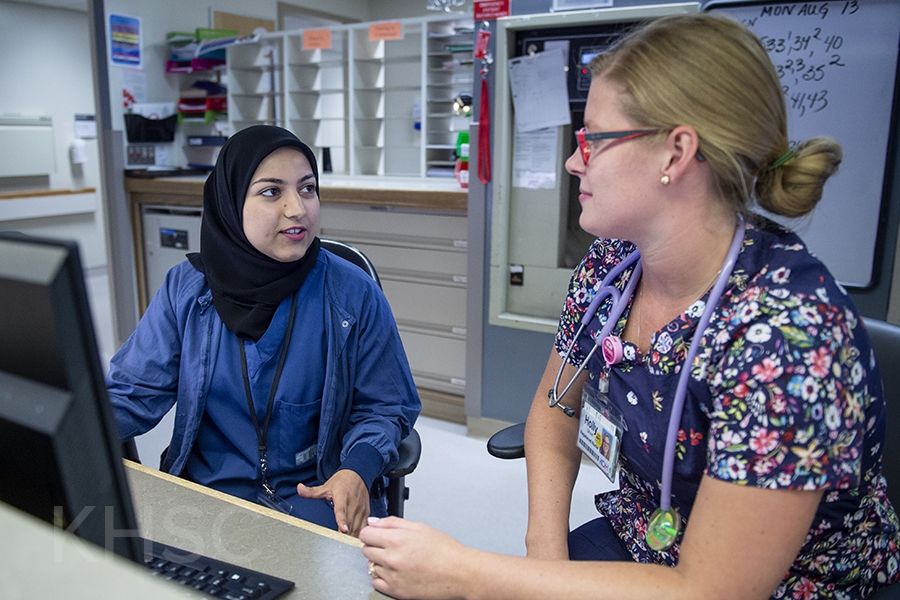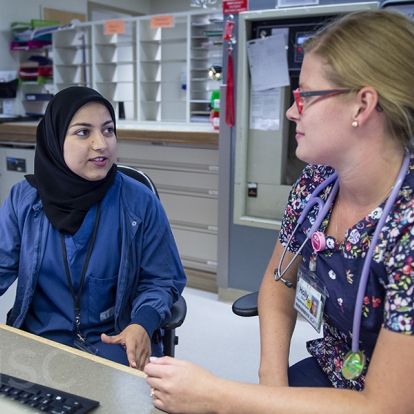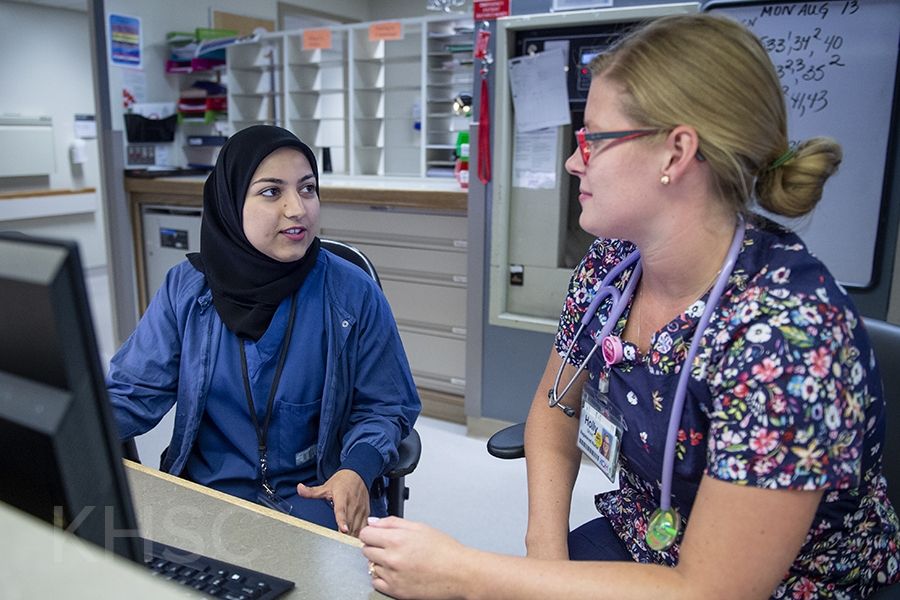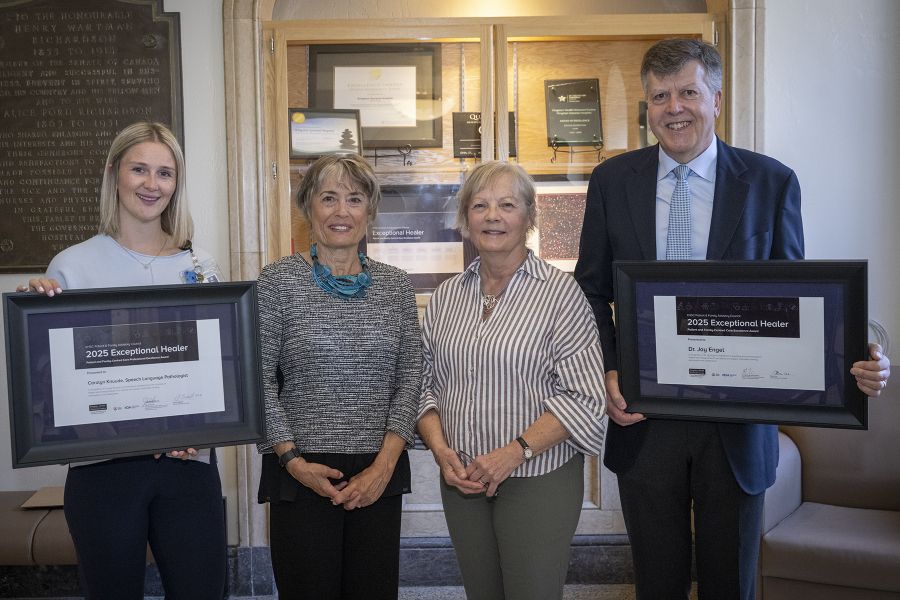
Second-year orthopedic resident Dr Andrew McGuire feels confident in his ability to care for patients, after completing the first phase of his training that, under the new competency-based medical education (CBME) model adopted last year, is designed to prepare residents for the responsibility of being on call and delivering more direct patient care at Kingston Health Sciences Centre (KHSC).
“So far, the CBME model has been very effective in helping me understand and focus on what I need to do to become the best physician I can be,” said Dr. McGuire. “I appreciate not having to guess whether or not I’m doing a good job, or deal with the stress of that kind of uncertainty.”
The formal feedback residents receive through the online evaluation portal happens every week at minimum, and comes from a variety of sources, not just staff physicians. “The specific, timely assessments from the entire care team, including allied-health professionals, help me learn, and meet the high standards patients expect from their health-care providers,” added Dr. McGuire.
He was one of approximately 130 medical residents who began their training at KHSC last summer, which was also the year Queen’s University became the first school in North America to implement the competency-based medical education model across all 29 of its specialty programs.
Since then, every medical school in Canada has started implementing this type of education across some of their programs, according to Dr. Damon Dagnone, associate professor in the Department of Emergency Medicine and faculty lead for CBME within Postgraduate Medical Education at Queen’s.
“How we’ve implemented the model, and the technology platform developed at Queen’s have become shining examples of how to maximize opportunities for graduates to become excellent physicians, who are competent across all aspects of independent practice,” said Dr. Dagnone. Currently, there are seventeen national and international medical schools using, what Dr. Dagnone describes as, “the go-to electronic platform for teaching and learning in medicine.”
Dr. McGuire credits the competency-based medical education model with ensuring residents achieve clearly defined milestones at every stage of their development, including those essential skills that previously weren’t formally taught or assessed, and residents were expected to pick up along the way. “Thanks to the thoughtful organization of the education model, I am now capable of prepping and draping a patient confidently for surgery, ensuring the environment is and remains sterile,” says Dr. McGuire.
Dr. Samantha Buttemer, a fourth-year public health resident, thinks the new education model aligns with the growing literature that links patient safety and improved patient care with how well multidisciplinary teams work together. “Nurses, for instance, have many opportunities to observe residents interacting with patients and making decisions about their care,” said Dr. Buttemer. “Their input is important to our education, and now they have a direct, easy way to provide that feedback.”
Over the year, buy-in from team members has steadily increased, and incremental improvements have been made to the online evaluation portal to make it more useful. “We’re all looking forward to next year when the electronic system allows us to receive feedback from patients, too,” said Dr. Jena Hall, a third-year obstetrics and gynaecology resident who is on the CBME executive team and chair of the resident sub-committee. “Having constructive participation in our education from multiple sources builds competency and confidence, and also helps us become a part of the community.”
For more information about CBME, please visit meds.queensu.ca.
Gallery


Registered nurse Holly Stroud and first-year resident Dr. Hossai Furmli on Kidd 5 Obstetrics and Gynecology discuss the CBME online evaluation portal



